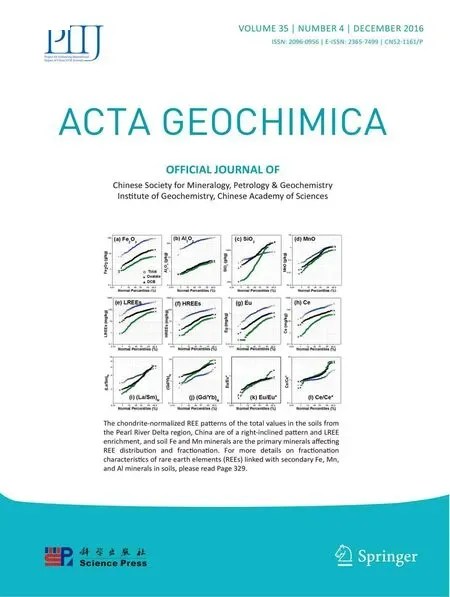Dissipation of polycyclic aromatic hydrocarbons in crop soils amended with oily sludge
2016-11-21ShaopingKuangWenjuanYuYanSongYaqingSuHuihuiWangLinaWang
Shaoping Kuang·Wenjuan Yu·Yan Song·Yaqing Su·Huihui Wang· Lina Wang
Dissipation of polycyclic aromatic hydrocarbons in crop soils amended with oily sludge
Shaoping Kuang1,2·Wenjuan Yu1·Yan Song1·Yaqing Su1·Huihui Wang1,2· Lina Wang1
Oil fields present a potential ecological risk to nearby farmland soil.Here we present a new method designed to evaluate the ability of winter wheat(Triticum aestivum)to contribute to the dissipation of polycyclic aromatic hydrocarbons(PAHs),which are priority pollutants in soils contaminated by oily sludge.The influence of different doses of oily sludge on the dissipation of PAHs was studied along with individual PAH profiles in soils after different periods of plant growth.Five soil samples were artificially contaminated with different percentages of oily sludge(0%,5%,10%,15%and 20%).Winter wheat grew in the oily sludge-amended soils for 265 days. PAH content in the soils was monitored over the course of the study.The rate of PAH dissipation is related to the properties of different PAHs,period of winter wheat growth,and oily sludge application dose.Analysis for treated soils indicates that the dissipation of PAHs increased significantly over the first 212 days,followed by minimal changes over the final 53 days of treatment.In contrast,PAH dissipation slowed with increasing oily sludge application.For each PAH,the experimental results showed a significant compound-dependent trend.Winter wheat in the present study significantly enhanced the dissipation of PAHs in oily sludge-contaminated soil.
✉ Shaoping Kuang
kuang1009@126.com
1Qingdao University of Science and Technology,Zhengzhou Road 53,Qingdao 266042,Shandong,People’s Republic of China
2Shandong Provincial Key Laboratory of Eco-Environmental Science for Yellow River Delta,Binzhou University,Binzhou 256600,Shandong,People’s Republic of China
Oily sludge·Soil·Polycyclic aromatic hydrocarbons·Dissipation·Bioremediation
1 Introduction
Polycyclic aromatic hydrocarbons(PAHs)are remarkable for their long half-life period in soil and biota.They are by-products from the incomplete combustion or pyrolysis of organic materials and sixteen of them are listed as priority pollutants by the United States Environmental Protection Agency(EPA)(Puglisi et al.2007;Das et al. 2008;Kim et al.2013;Zhang et al.2015).PAHs are concerning mainly for their widespread occurrence,recalcitrance,and toxic/carcinogenic properties which may adversely affect both human health and biota(Yang et al. 2008;Cao et al.2013;Maria et al.2014;Wang et al. 2015).PAHs can easily present in soils via atmospheric deposition as well as anthropic activity(such as disposal of waste materials,car tire shredding and road runoff,sewage sludge,industrial wastewater,and compost applied to agricultural land)(Qiao et al.2008;Edris et al.2014;Roozbeh et al.2014;Hu et al.2015).Soils become the main environmental harbors for these contaminants(Chaineau et al.2000;Wang et al.2012,2013;Tsibart and Gennadiev 2013).
Over the last few years,interest has increased around PAH remediation technologies that are cheap and environmentally friendly(Ortega-Calvo et al.2007;Peng et al. 2008;Maillacheruvu and Pathan 2009;Minai-Tehrani et al. 2015).Phytoremediation has gained acceptance and now is considered one of the most promising alternative remediation approaches for PAHs in soil(Joner and Leyval 2003;Fernández-Luquen˜o et al.2008;Ma et al.2009;Liu et al. 2013).Much research has been conducted about PAHs insoil and plants(Aichberger et al.2006;Stroud et al.2007;Priyanka et al.2015).However,research focused on PAHs from oily sludges is less abundant(Zhang et al.2015;Kuang et al.2008;Nanekar et al.2015).Little is known about the potential impact of edible plants on the fate of PAHs in oily sludge-contaminated soils and the basic mechanisms involved remain poorly understood(Su and Zhu 2008;Ma et al.2009;Oleszczuk 2009).On the other hand,increasing oil exploitation continues to produce large amounts of PAH-abundant oily sludge.Improper management of oily sludge causes serious damage to ecosystems and the abundant PAHs in oily sludge may persist in soil for a long time,turning oily sludge disposal into a prominent environmental problem.As PAHs can easily enter sediment,the determination of PAH dissipation in agricultural soil around oilfields is an important research question(Kuang and Chen 2009).
The aim of the present work is to investigate soil PAH dissipation with field phytoremediation.Winter wheat(Triticum aestivum)was chosen as the test plant in our research since it is a typical crop in northern China.The experiment was designed to evaluate the ability of winter wheat to contribute to PAH removal.Variation for the dissipation of the sixteen PAHs in the EPA list was determined.In order to simulate environmental conditions,soils used in this experiment were artificially contaminated with different percentages of oily sludge.The results provide the theoretical basis for the proper utilization and scientific management of oily sludge in oil fields.
2 Samples and experiments
2.1Instruments
PAHs were determined by high performance liquid chromatography(HPLC,Shimadzu,Japan)with a fluorescence detector and VP-ODS column(Serial No.9122504,150L×4.6),and extracted by ultrasonic washer(KQ5200,Kunshan in China).The concentration of PAHs in liquors was finished by rotary evaporator(Shensheng SENCO-R,China)and thermostat water bath(Shensheng W201B,China).PAH samples were separated by low-speed tabletop centrifuge(TDL-40B,Shanghai),Quick mixer(Changzhou,China),and water cycling multipurpose vacuum pump(SHB-III,Zhengzhou in China).
2.2Reagents
Dichloromethane,cyclohexane,acetonitrile,methanol,silica,and anhydrous sodium sulfate were used.Among them,acetonitrile was chromatographically pure;other reagents were all analytically pure.Methanol was distilled prior to use.Silica was used in the stratographic analysis. PAH standard matters were bought from Supelco Corporation of America.
2.3Soil samples collection and treatment
Soil used in this experiment was farmland soil without any known contamination history.In order to simulate typical properties of the farmland soil contaminated by oily sludge,winter wheat was cultured in five different soils with increasing mass percentages(0%,5%,10%,15%and 20%)of oily sludge.Oily sludge mass percentages were calculated by dry mass.The initial content of each PAH in oily sludge-amended soil was calculated according to the control soil and oily sludge(Yu et al.2013).The seeds of winter wheat germinated directly in the open air without any fertilization control;water was needed.Due to the long growth cycle of winter wheat,the experiments were carried out for 265 days.
Oily sludge-amended soil samples were collected and analyzed after 53,106,159,212 and 265 days.The soil samples were immediately air-dried,grinded,and sieved after being collected.They were then placed into polyvinyl chloride bags,sealed,and stored at room temperature prior to PAH analyses.
2.4Extraction,concentration,purification,and determination of PAHs
(1) The extraction,concentration and purification of PAHs.A sample was put into a centrifuge bottle and dichloromethane was added.The centrifuge bottle was kept in the ultrasonic washer for 2 h and then transferred into the centrifugal vacuum pump.A volume of 10.00 mL of supernatant was transferred into an egg yard type bottle,and all the liquids were dried by rotary evaporator.Afterwards,the resulting residue was dissolved with cyclohexane.A 0.50 mL sample of the obtained solution was put on the mini silica column.A second fraction containing PAHs was collected and blown dry with nitrogen.
(2) Determination of PAHs.Samples were determined by HPLC equipped with fluorescence detector. Sample preconcentration liquid and mixed certificated liquid were extracted separately.
The qualitative analysis was done by the comparison of the retention time of PAHs,while the quantitative analysis was carried out by the determination of PAHs using an external standard method.In addition,principal component analysis was conducted with SPSS1 1.0.Categories and contents of PAHs in variously treated soil samples after different periods of plant growth are presented in Tables 1,2,3,and4.(The initial contents of PAHs in the control soil and oily sludge and the contents of PAHs after 265 days of plant growth were illustrated in Yu et al.2013).The initial contents of individual PAHs in oily sludge-amended soil were calculated according to the content of control soil and oily sludge.
2.5Data analysis
The dissipation of PAHs was evaluated according to the following formula:
PAH dissipation(%)=100-Ct×100/C0
where Ctis the concentration(μg/g)of PAHs in soil at the time t and C0is the concentration(μg/g)of PAHs in soil at the time 0.
3 Results and discussion
Sixteen PAHs listed as priority pollutants presented in study soils.The total PAH contents of oily sludge and control soil were 3504.66 and 16.96 μg/g,respectively. Naphthalene and phenanthrene were predominant in the control soil.In line with the soil,oily sludge used in this experiment had a considerably high content of 2-and 3-ring PAHs.The introduction of sludge into the soil results in an increase in soil PAH content(Baran andOleszczuk 2003;Oleszczuk and Baran 2005;Varun et al. 2013).Table 5 shows that PAH concentrations in the treated soil varied distinctly during the experimental period.It was found that the apparent losses of PAHs wererelated to the properties of different PAHs,the period of winter wheat growth,and oily sludge application dose.
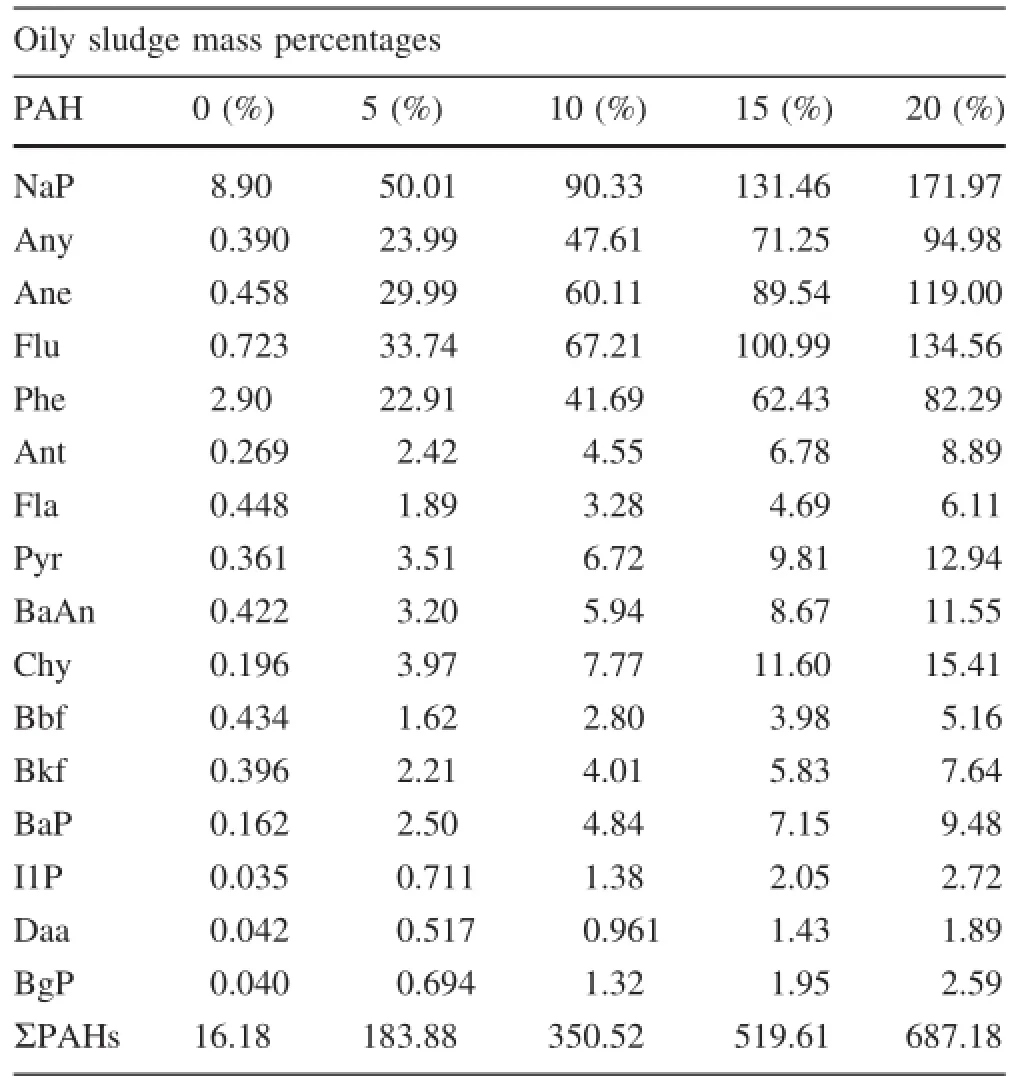
Table 1 Residual concentrations(μg/g)of PAHs in treated soil samples after 53 days of plant growth
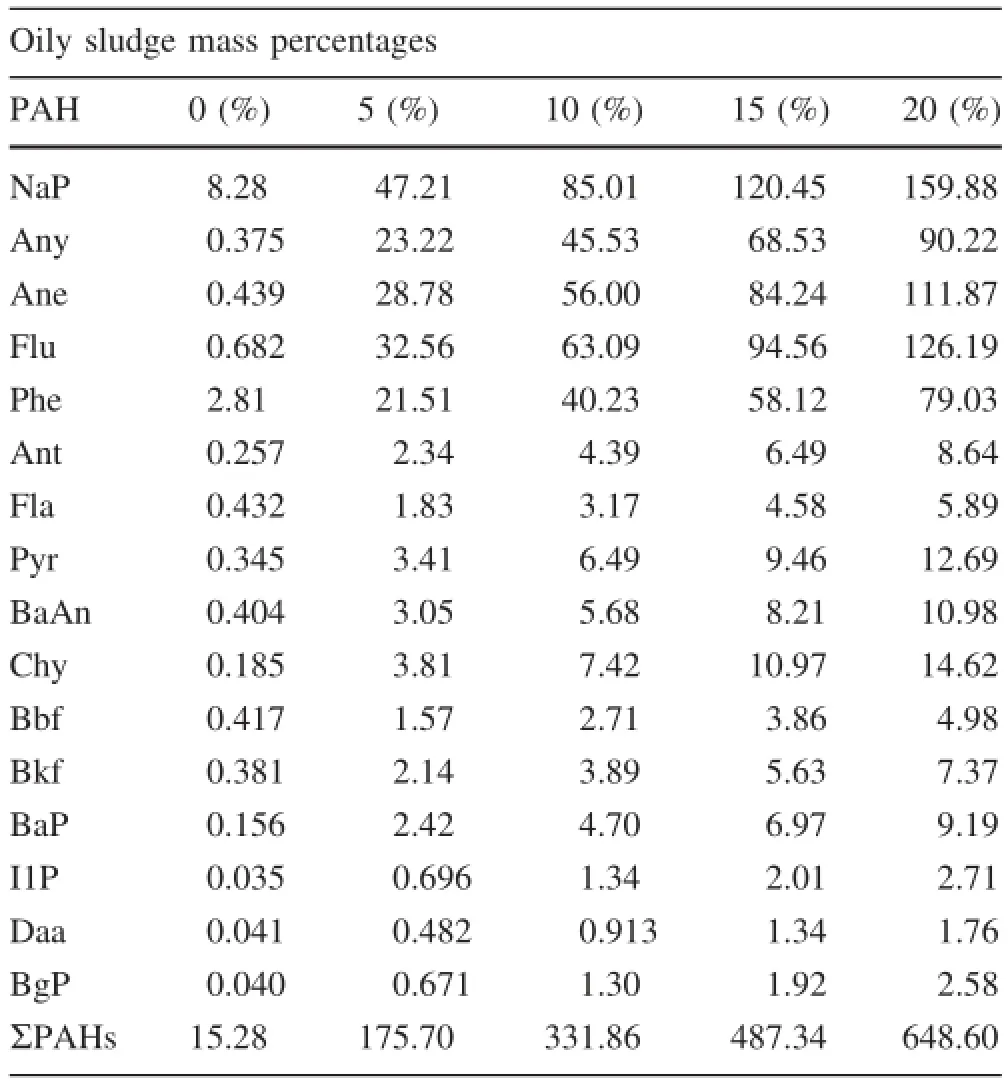
Table 2 Residual concentrations(μg/g)of PAHs in treated soil samples after 106 days of plant growth
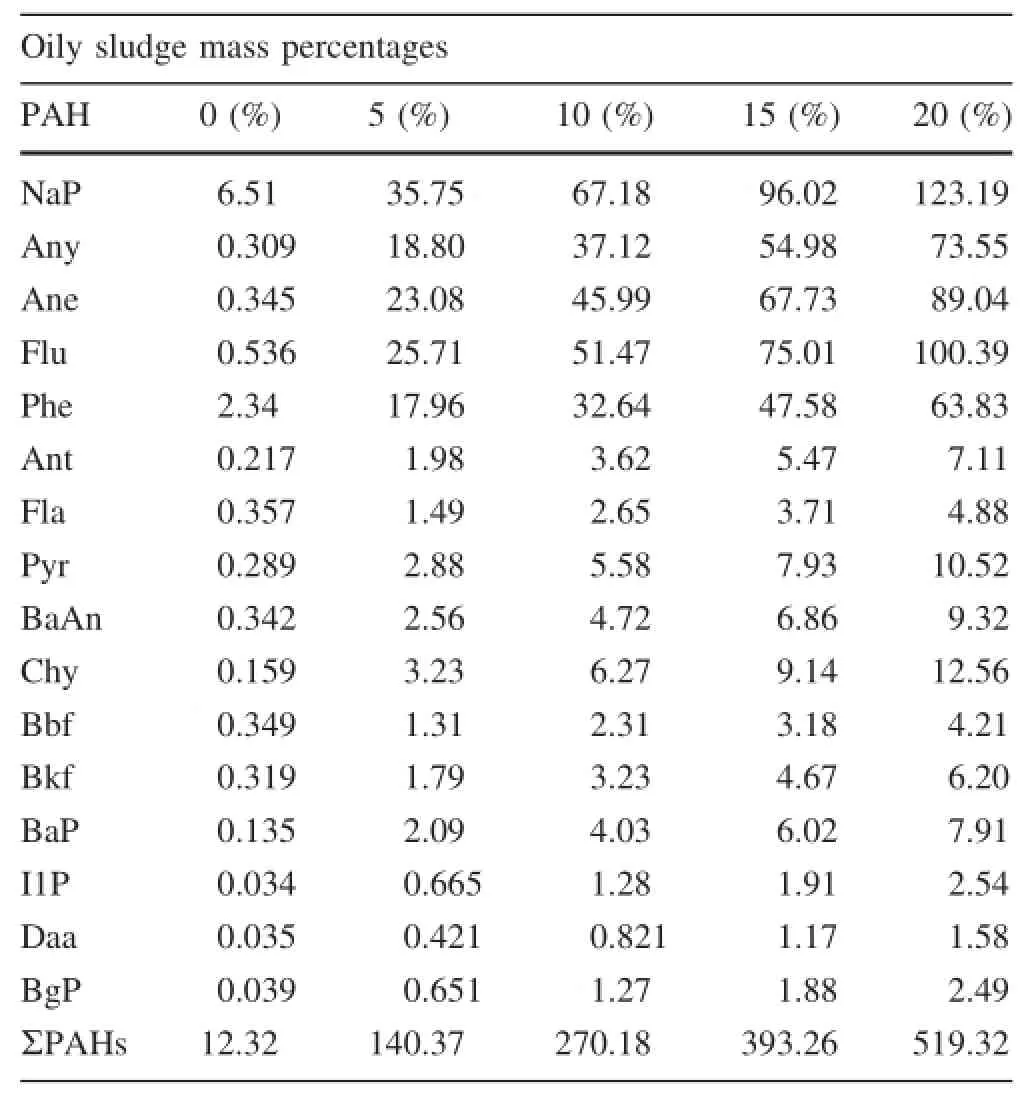
Table 3 Residual concentrations(μg/g)of PAHs in treated soil samples after 159 days of plant growth
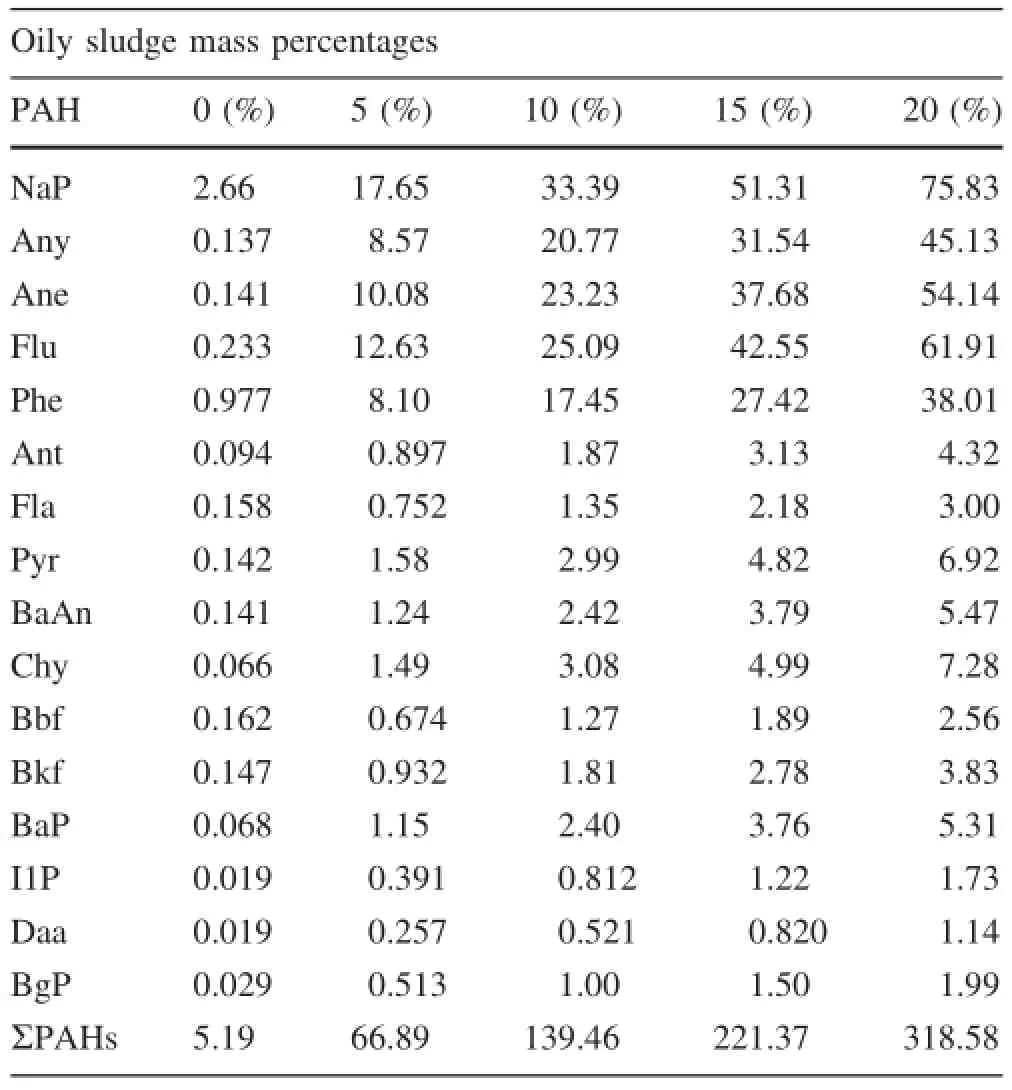
Table 4 Residual concentrations(μg/g)of PAHs in treated soil samples after 212 days of plant growth
3.1Impact of time on PAH dissipation
The period of winter wheat growth was an important factor affecting PAH losses.During the whole period of study,continuous variation of PAH content was observed.The dissipation rate of PAHs increased significantly with time. For example,the average dissipation rate(for all studied soils)of predominant PAHs in the period of the first 53 days was only 4.94%,3.43%,3.79%,3.63%and 3.86%for naphthalene,acenaphthylene,acenaphthene,fluorene,and phenanthrene,respectively,while in the continuous period of the first 212 days the corresponding losses of those PAHs were 64.78%,60.17%,63.32%,62.37%,and 61.33%,followed by minimal variations over the subsequent 53 days of treatment.The applied dissipation rates of PAHs explain the variability of the low values in the initial period of the first 53 days;the dissipation rates increased with time to the largest value of 70.67%at the end of the experiment.Figure 1 presents the significant trend of total PAH content in treated soils related to the days of winter wheat growth.The most pronounced dissipation of PAHs was found at the heading stage of winter wheat.
The dissipation rates of individual PAHs are illustrated in Table 5;the half-lives for most PAHs(5-and 6-ring PAHs being the exception)were between 59 and 212 days irrespective ofoily sludge application dose.Forexample,the T1/2values formostPAHs in soilcontaminated by oily sludge at 20%approached 212 days.As for 5-and 6-ring PAHs(benzo[a]pyrene,indeno(1,2,3-cd)pyrene,dibenzo(a,h)anthracene,and benzo(g,h,i)perylene),the half-lives were not reached by the end of the study.The highest T1/2values corresponded to naphthalene and the lowest to benzo(g,h,i)perylene.
3.2Effect of PAHs properties on PAHs dissipation
As for individual PAHs,the overall extent of PAH loss from all treated soils showed a significant compound-dependent trend in line with previous findings(Fismes et al. 2002;Gao and Zhu 2004;Ian et al.2013;Jin et al.2014). The average concentration of PAHs with various rings in soil samples are listed in Fig.2,which shows that the properties of PAHs strongly influence the extent of their dissipation.The dissipation rates of low-molecular-weight PAHs are much higher than those of high-molecularweight PAHs,despite the fact that low-molecular-weight PAHs are predominant in soil.In the experimental treatment with various doses of oily sludge,more than half(51.66%)of 2-to 4-ring PAHs degraded,whereas the dissipation was much lower in the case of 5-to 6-ring PAHs.For example,the lowest dissipation in the present study was only 27.94%.This pronounced trend is in agreement with many other research reports,which suggests that high-molecular-weight PAHs are more resistant to microbial attack than low-molecular-weight PAHs(Tabak et al.2003;Lee et al.2008).
3.3Impact of oily sludge application on PAH dissipation
The contents of PAHs in treated soils increase along with the oily sludge percentages.The dissipation rate of PAHs in soils planted with winter wheat was negatively correlated with the percentages of oily sludge.The reduction of PAH dissipation ratios might be attributed to the more negative effect of PAHs on winter wheat growth with the percentages of oily sludge increasing.The cause might be the inherent toxicity of PAHs;PAHs might have indirect adverse effects on plants by reducing the ability of soil to provide nutrients and water for plants.
The removal extent for individual PAHs depended on the oily sludge dose.For example,the dissipation rates for naphthalene and phenanthrene after 265 days of plantgrowth were 59.97%and 58.16%,respectively,in planted soil with a 20%oily sludge dose,which were significantly lower than in soil with a 5%oily sludge dose 5%-69.83%and 67.98%,respectively.Figure 3 presents the pronounced trend of total PAH content in planted soil with respect to the oily sludge percentages.
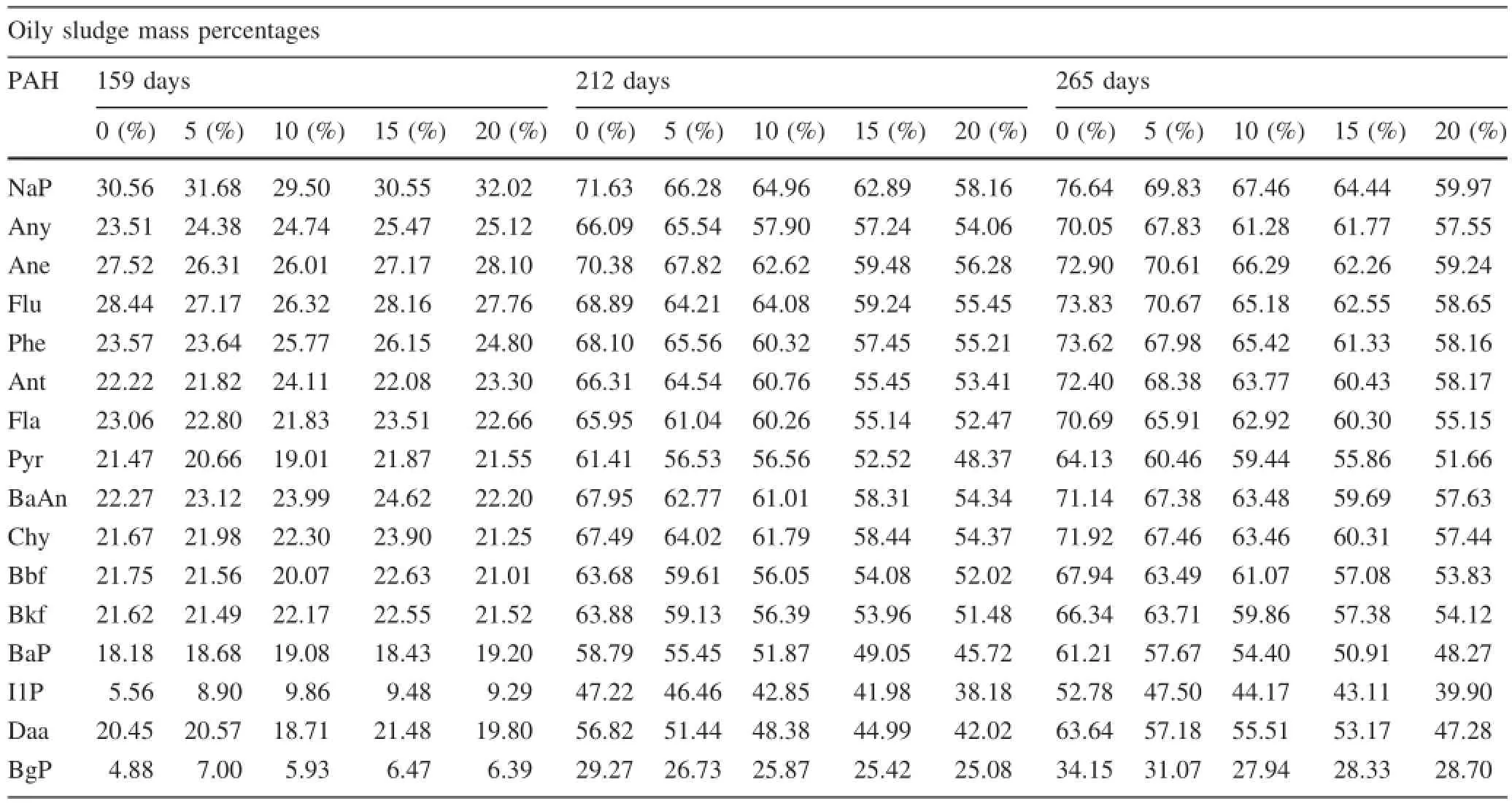
Table 5 The rates of PAH dissipation in different soils after different periods of plant growth

Fig.1 Total PAH content in treated soils with respect to the days of winter wheat growth
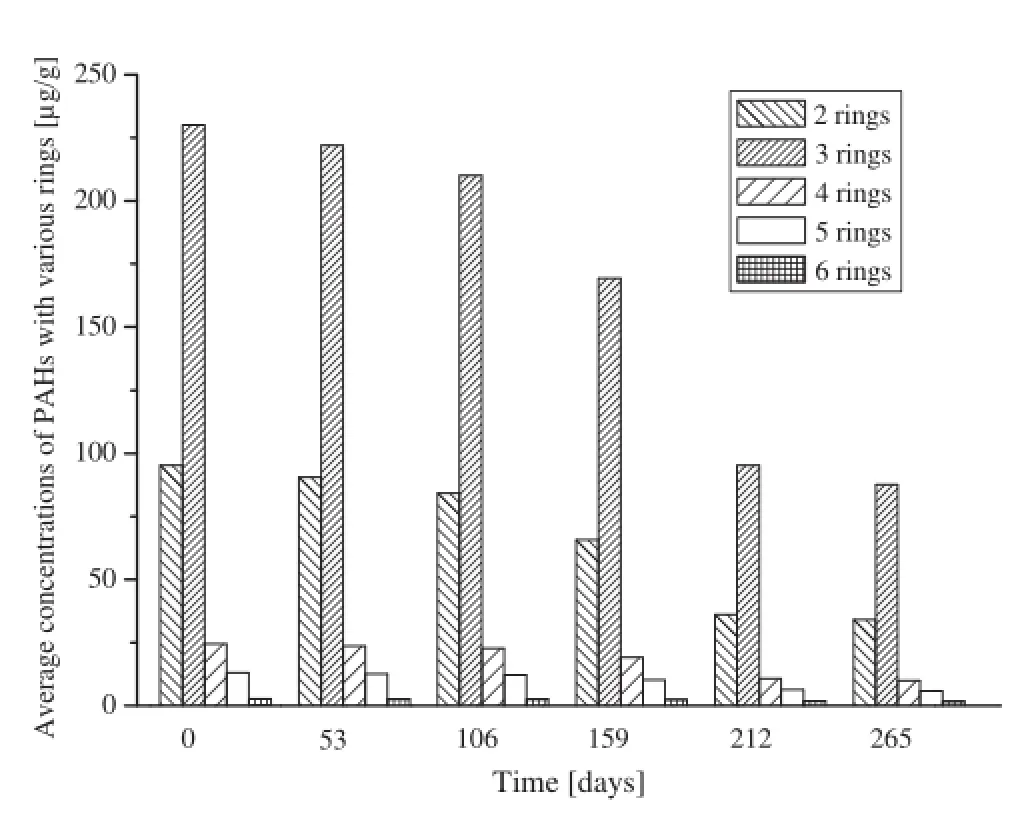
Fig.2 The average concentrations(μg/g)of PAHs(for all studied soils)with various rings in treated soils
3.4Enhancement of PAH dissipation in crop soil
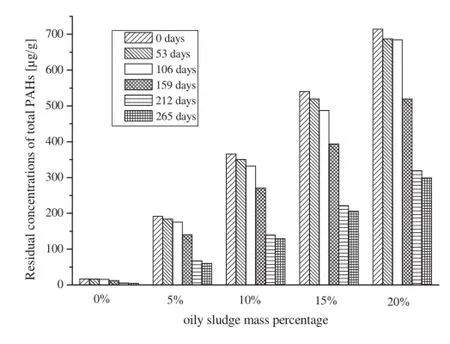
Fig.3 Total PAH content in planted soils with respect to oily sludge dose(defined as the ration of oily sludge weight and soil total weight on a dry weight basis)
The residual concentrations of PAHs in control soil with and without winter wheat planted were analyzed.The residual concentrations of PAHs in the planted soil without oily sludge application were lower than those in corresponding unplanted soil.Residual concentrations(μg/ g)of PAHs in the control soil samples after different periods of monitoring are illustrated in Table 6.Naphthalene and phenanthrene were predominant in the control soil.For example,the dissipation rates of naphthalene and phenanthrene in planted soil with initial concentrations of9.375 and 3.063 μg/g were 71.63%and 68.10%after 212 days of plant growth.These rates are significantly higher compared with corresponding rates in unplanted soil-4.45%and4.38%,respectively.Pronounced increases in dissipation of naphthalene and phenanthrene in planted and unplanted soils after different periods of plant growth are illustrated in Fig.4.
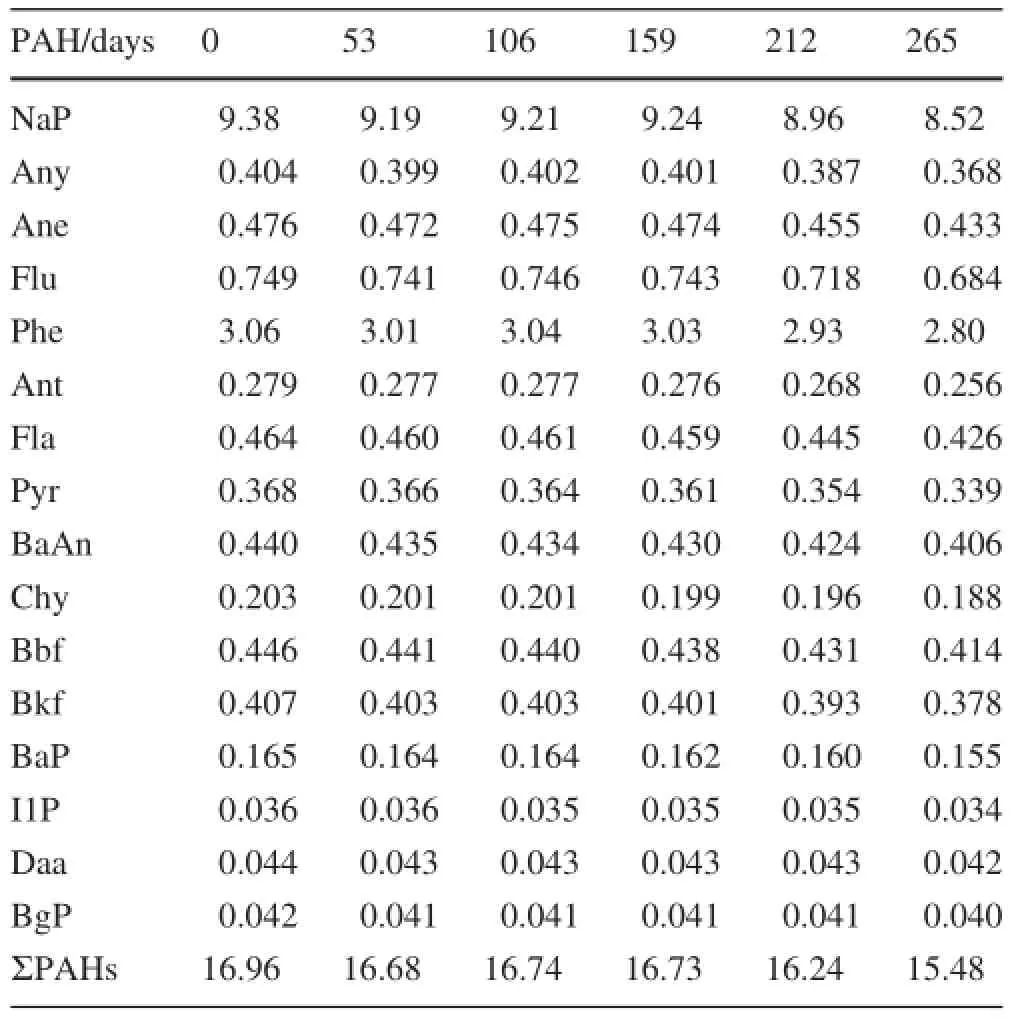
Table 6 Residual concentrations of PAHs(μg/g)in the control soil samples after different periods
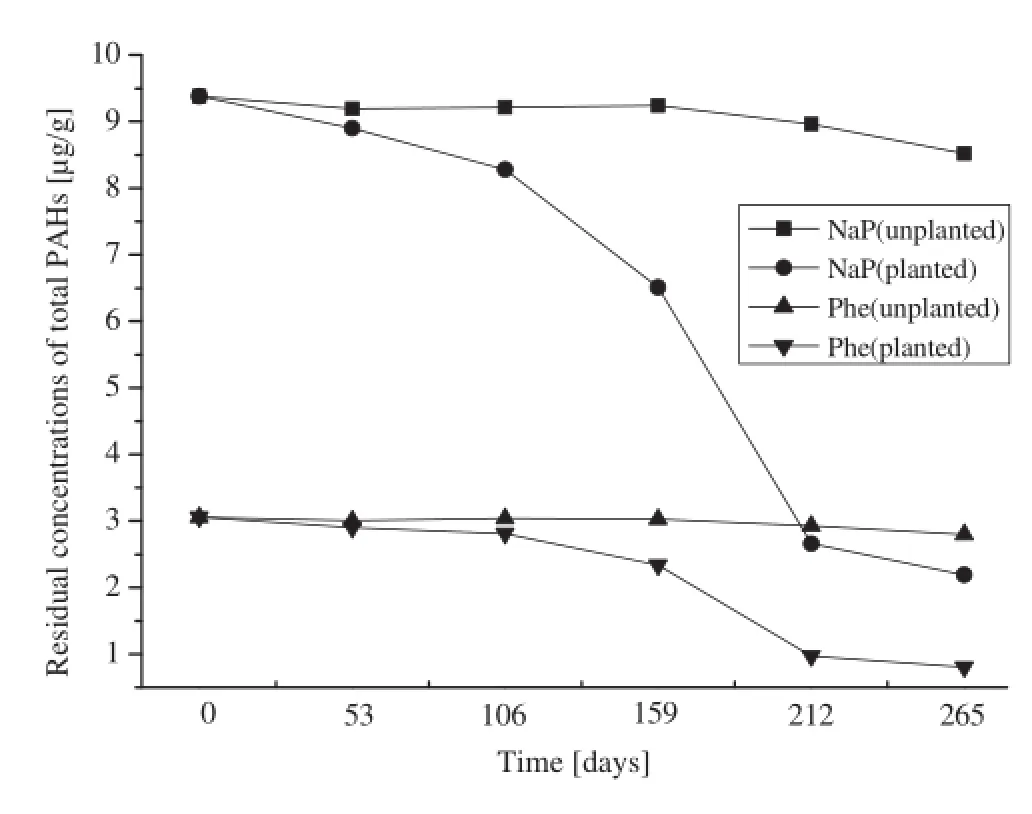
Fig.4 Residual concentrations of NaP and Phe in planted and unplanted soils with respect to the period of winter wheat growth
Winter wheat evidently promotes the dissipation of PAHs.The observed results,based on the dissipation ratios of PAHs in planted and unplanted soil,confirm the impact of winter wheat.After 265 days,PAH contents significantly decreased in the planted soils,corroborating many other studies.The reasons for the loss of PAHs from soil might be plant uptake,bio-transformation,bio-degradation,or abiotic dissipation,including leaching and volatilization(Shaw and Burns 2003;Kunihiro et al.2013;Li et al. 2015).However,many researchers have reported that plant direct accumulation of PAHs only accounted for a slight share of the enhanced dissipation and could be assumed to be negligible(Ke et al.2003;Xu et al.2005).The dominant contribution to the loss of PAHs might be plant-promoted biodegradation.The enhanced dissipation of PAHs might be rooted in greater activity of microorganisms and a higher density in planted soil.The plant litter and root exudates could modify the soil environment more suitably for microbial transformation,enhancing the bioavailability of the contaminants and providing substrates for co-metabolic dissipation(Ke et al.2003).
4 Conclusions
The present study reveals the potential ecological risk of the farmland soil around oil fields.The rates of PAH dissipation in crop soil contaminated with PAHs are related toPAH properties and concentrations.The persistence of PAHs is also significantly influenced by winter wheat growth.Prolonged winter wheat growth leads to a decrease in PAH dissipation rates.The influence was important in the period from 159 to 212 days with only a minor reduction over the subsequent 53 days of treatment.In this the period from 159 to 212 days,the specific properties of PAHs had a very slight effect on the loss of PAHs.The residual concentrations of PAHs in planted and unplanted soils indicate that the presence of winter wheat significantly enhanced the dissipation of PAHs,regardless of the variation in initial concentrations of PAHs in the control soil.
Acknowledgments The study is jointly supported by National Natural Science Foundation of China(41541025)and Open Research Fund Program of Shandong Provincial Key Laboratory of Eco-Environmental Science for Yellow River Delta(Binzhou University)(2015KFJJ01).
References
Aichberger H,Andreas PL,Celis R,Braun R,Ottner F,Rost H(2006)Assessment of factors governing biodegradability of PAHs in three soils aged under field conditions.Soil Sediment Contam 15:73-85
Baran S,Oleszczuk P(2003)Changes in the content of polycyclic aromatic hydrocarbons(PAHs)in light soil fertilized with sewage sludge.J Environ Sci Health A 38:793-805
Cao XF,Liu M,Song YF,AcklandM L(2013)Composition,sources,and potential toxicology of polycyclic aromatic hydrocarbons(PAHs)in agricultural soils in Liaoning,People’s Republic of China.Environ Monit Assess 185:2231-2241
Chaineau CH,Morel JL,Oudot J(2000)Biodegradation of fuel oil hydrocarbons in the rhizosphere of maize.J Environ Qual 29:569-578
Das P,Mukherjee S,Sen R(2008)Improved bioavailability and biodegradation of a model polyaromatic hydrocarbon by a biosurfactant producing bacterium of marine origin.Chemosphere 72:1229-1234
Edris M,Saeid G,Leila A,Masoomeh A,Jafar S(2014)The application of soil washing for treatment of polycyclic aromatic hydrocarbons contaminated soil:a case study in a petrochemical complex.Environ.Prog.Sustain.Energy 33:107-113
Fernández-Luquen˜o F,Marsch R,Espinosa-Victoria D,Thalasso F,Hidalgo-Lara ME,Munive A,Luna-Guido ML,Dendooven L(2008)Remediation of PAHs in a saline-alkaline soil amended with wastewater sludge and the effect on dynamics of C and N. Sci Total Environ 402:18-28
Fismes J,Perrin-Ganier C,Empereur-Bissonnet P,Morel JL(2002)Soil-to-Root transfer and translocation of polycyclic aromatic hydrocarbons by vegetables grown on industrial contaminated soils.J Environ Qual 31:1649-1656
Gao Y,Zhu L(2004)Plant uptake,accumulation and translocation of phenanthrene and pyrene in soils.Chemosphere 55:1169-1178
Hu W,Liu GB,Tu Y,Zhong Q(2015)Emission of polycyclic aromatic hydrocarbons from different types of motor vehicles’exhaust.Environ Earth Sci 74:5557-5564
Ian JK,Roy MH,Gerhard L(2013)Chemical reactivity and longrange transport potential of polycyclic aromatic hydrocarbonsa review.Chem Soc Rev 42:9333-9391
Jin AF,He JT,Chen SN,Huang GX(2014)Distribution and transport of PAHs in soil profiles of different water irrigation areas in Beijing,China.Environ Sci Processes Impacts 16:1526-1534
Joner EJ,Leyval C(2003)Rhizosphere gradients of polycyclic aromatic hydrocarbon(PAHs)dissipation in two industrial soils and the impact of arbuscular Mycorrhiza.Environ Sci Technol 37:2371-2375
Ke L,Wang WQ,Wong TWY,Wong YS,Tam NFY(2003)Removal of pyrene from contaminated sediments by mangrove microorganisms.Chemosphere 51:25-34
Kim KH,Jahan SA,Kabir E,Brown RJC(2013)A review of air borne polycyclic aromatic hydrocarbons(PAHs)and their human health effects.Environ Int 60:71-80
Kuang SP,Chen H (2009)Distribution of polycyclic aromatic hydrocarbons in soils and corns,and its risk assessment in summer around Zhongyuan oil field,China.Int J Oil Gas Coal Technol 2:331-346
Kuang SP,Sun DY,Sun YH(2008)Pollution characteristics of PAHs in oily sludge and around soils of Zhongyuan oil field.J Agro-Environ Sci 27:855-861
Kunihiro M,Ozeki Y,Nogi Y,Hamamura N,Kanaly RA(2013)Benz[a]anthracene biotransformation and production of ring fission products by Sphingobium sp.StrainKK22.Appl Environ Microbiol 79:4410-4420
从表1中可以看到,利用ANSYS有限元分析软件建立的SOLID95模型得到的数值解与文献[2]用板单元SHELL63建立的模型计算结果基本相吻合,某些点的应力甚至比文献[2]的应力更加接近实验值。其中,数值计算解与变分法理论计算值误差在16.4%以内,与试验数据的误差只有两个点超过6%,其余点均在6%以内。以跨中截面上顶板正应力为例,如图3所示,表示的是本研究用ANSYS模型计算的跨中上顶板正应力与用变分法理论计算结果和该有机玻璃模型梁试验结果的对比图。
Lee SH,Lee WS,Lee CH,Kim JG (2008)Degradation of phenanthrene and pyrene in rhizosphere of grasses and legumes. J Hazard Mater 153:892-898
Li RL,Tan HD,Zhu YX,Zhang Y(2015)In situ simultaneous investigation of the transport of phenanthrene and fluoranthene adsorbed onto the root surfaces to tissues of mangrove seedlings. Anal Methods 7:6828-6836
Liu WX,Sun JY,Ding LL,Luo YM,Chen MF,Tang CX(2013)Rhizobacteria(Pseudomonas sp.SB)assist phytoremediation of oily-sludge-contaminated soil by tall fescue(Testucaarundinacea L.).Plant Soil 371:533-542
Ma B,He Y,Chen HH,Xu JM (2009)Dissipation of polycyclic aromatic hydrocarbons(PAHs)in the rhizosphere:synthesis through meta-analysis.Environ Pollut 158:855-861
Maillacheruvu KY,Pathan IA(2009)Biodegradation of naphthalene,phenanthrene,and pyrene under anaerobic conditions.J Environ Sci Health A 44:1315-1326
Maria L,Jessika H,John PG,Magnus E(2014)Time-dependent relative potency factors for polycyclic aromatic hydrocarbons and their derivatives in the H4IIE-luc bioassay.Environ Toxicol Chem 33:943-953
Minai-Tehrani D,Rohanifar P,Azami S(2015)Assessment of bioremediation of aliphatic,aromatic,resin,and asphaltene fractions of oil-sludge-contaminated soil.Int J Environ Sci Technol 12:1253-1260
Nanekar S,Dhote M,Kashyap S,Singh SK,Juwarkar AA(2015)Microbe assisted phytoremediation of oil sludge and role of amendments:a mesocosm study.Int J Environ Sci Technol 12:193-202
Oleszczuk P,Baran S(2005)The concentration of polycyclic aromatic hydrocarbons in sewage sludge-amended soil.Commun Soil Sci Plan 36:1083-1097
Ortega-Calvo J,Ball WP,Schulin R,Semple KT,Wick LY(2007)Bioavailability of pollutants and soil remediation.J Environ Qual 36:1383-1384
Peng RH,Xiong AS,Xue Y,Fu XY,Gao F,Zhao W,Tian YS,Yao QH(2008)Microbial biodegradation of polyaromatic hydrocarbons.FEMS Microbiol Rev 32:927-955
Priyanka C,Harmesh S,Richa S,Alok KP,Shashi BS,SaxenaA K,Lata N (2015)Identification and analysis of polyaromatic hydrocarbons(PAHs)-biodegrading bacterial strains from refinery soilof India.Environ Monit Assess 187:391
Puglisi E,Cappa F,Fragoulis G,Trevisan M,Del Re AAM(2007)Bioavailability and degradation of phenanthrene in compost amended soil.Chemosphere 67:548-556
Qiao M,Huang S,Wang Z(2008)Partitioning characteristics of PAHs between sediment and water in a shallow lake.J Soils Sediments 8:69-73
Roozbeh M,Mehdi M,Iraj F,Ehsan A,Ali F,Ali A,Mohammad AZ(2014)Source identification of polycyclic aromatic hydrocarbons(PAHs)in sediment samples from the northern part of the Persian Gulf,Iran.Environ Monit Assess 186:7387-7398
Shaw LJ,Burns RGO(2003)Biodegradation of organic pollutants in the rhizgsphdre.Adv Appl Microbial 53:1-60
Stroud JL,Paton GI,Semple KT(2007)Microbe-aliphatic hydrocarbon interactions in soil:implications for biodegradation and bioremediation.J Appl Microbial 102:1239-1253
Su YH,Zhu YG(2008)Uptake of selected PAHs from contaminated soils by rice seedlings(Oryza sativa)and influence of rhizosphere on PAH distribution.Environ Pollut 155:359-365
Tabak HH,Lazorchak JM,Lei L,Khodadoust AP,Antia JE,Bagchi R,Uidan MT(2003)Studies on bioremediation of polycyclic aromatic hydrocarbon-contaminated sediments:bioavailability,biodegradability,and toxicity issues.Environ Toxicol Chem 22:473-482
Tsibart AS,Gennadiev AN(2013)Polycyclic aromatic hydrocarbons in soils:sources,behavior,and indication significance(a review).Eurasian Soil Sci 46:728-741
Varun K,Steven EK,Dylan E,Thomas B,Vinka OC(2013)Enhanced containment of polycyclic aromatic hydrocarbons through organic modification of soils.Environ Prog Sustain Energy 33:47-54
Wang N,Li HB,Long JL,Cai C,Dai JL,Zhang J,Wang RQ(2012)Contamination,source,and input route of polycyclic aromatic hydrocarbons in historic wastewater-irrigated agricultural soils. J Environ Monit 14:3076-3085
Wang S,Ni HG,Sun JL,Jing X,He JS,Zeng H(2013)Polycyclic aromatic hydrocarbons in soils from the Tibetan Plateau,China: distribution and influence of environmental factors.Environ Sci Process Impacts 15:661-667
Wang J,Cao XF,Liao JQ,Huang Y,Tang XY(2015)Carcinogenic potential of PAHs in oil-contaminated soils from the main oil fields across China.Environ Sci Pollut Res 22:10902-10909
Xu SY,Chen YX,Lin Q,Wang WX,Xie SG,Shen CF(2005)Uptake and accumulation of phenanthrene and pyrene in spiked soils by ryegrass(Loliumperenne L).J Environ Sci 17:817-822
Yang Y,Hofmann T,Pies C,Grathwohl P(2008)Sorption of polycyclic aromatic hydrocarbons(PAHs)to carbonaceous materials in ariver flood plain soil.Environ Pollut 156:1357-1363
Yu WJ,Kuang SP,Zhao LS(2013)Uptake,accumulation and translocation of polycyclic aromatic hydrocarbons by winter wheat cultured on oily sludge-amended soil.Chin J Geochem 32:295-302
Zhang WH,Wei CH,An GF(2015)Distribution,partition and removal of polycyclic aromatic hydrocarbons(PAHs)during coking wastewater treatment processes.Environ Sci Process Impacts 17:975-984
5 January 2016/Revised:21 April 2016/Accepted:9 May 2016/Published online:28 May 2016
©Science Press,Institute of Geochemistry,CAS and Springer-Verlag Berlin Heidelberg 2016
猜你喜欢
杂志排行
Acta Geochimica的其它文章
- Element geochemical characteristics of a soil profile developed on dolostone in central Guizhou,southern China:implications for parent materials
- Geochemistry of sedimentary rocks from Permian-Triassic boundary sections of Tethys Himalaya:implications for paleo-weathering,provenance,and tectonic setting
- Standard-sample bracketing calibration method combined with Mg as an internal standard for silicon isotopic compositions using multi-collector inductively coupled plasma mass spectrometry
- Study on oil-source correlation by analyzing organic geochemistry characteristics:a case study of the Upper Triassic Yanchang Formation in the south of Ordos Basin,China
- The genetic relationship between Habo alkaline intrusion and its surrounding deposits,Yunnan Province,China:geological and S-Pb isotopic evidences
- Copper partitioning between granitic silicate melt and coexisting aqueous fluid at 850°C and 100 MPa
